April 25: Who Is Behind the Campus Protests?
Post-Covid college sucks; Another fake massacre in Gaza; Trump on trial in Manhattan
The Big Story
The protests on American college campuses have spread, despite disciplinary threats from school administrators and sporadic police attempts to clear encampments. Columbia, Harvard, Yale, NYU, MIT, Michigan, Texas, North Carolina, the University of Southern California, and others have all seen “Gaza solidarity encampments” or “Popular University for Gaza” protests spring up—with matching rhetoric, matching tactics and, in many cases, matching tents:
We don’t know of any direct Qatari connection, but @strxwmxn is right to be skeptical about the “spontaneous” nature of the protests. In this case, the professional activist cadres pulling the strings of the “grassroots” protest appear to come from National Students for Justice in Palestine (SJP), which put out an organizing call on April 20 urging students and faculty to “join the Popular University” and “seize our universities and force the administration to divest.” On April 22, SJP released a “mission statement” for the protests, which included the demand that there be “no classes or compliance with our institutions so long as their shameless profiteering off our genocide persists.”
SJP, Scroll readers will recall, is funded, advised by, and shares leadership with American Muslims for Palestine (AMP). Both groups were founded by Hatem Bazian, a former fundraiser for KindHearts, which closed after being sanctioned by the U.S. Treasury for fundraising for al-Qaeda. AMP is the subject of an ongoing federal lawsuit alleging that it is a “disguised continuance” and legal “alter ego” of the shuttered “propaganda arm” of the Holy Land Foundation, an Islamic charity that was successfully prosecuted for fundraising for Hamas. SJP’s calls for the “Popular University,” meanwhile, have been echoed by AMP itself, as well as by foundation-funded fake Jewish groups such as Jewish Voice for Peace. Here’s a visualization of the AMP/SJP corporate structure, from former Treasury official Jonathan Schanzer’s congressional testimony in November:
You may recognize the WESPAC Foundation, which is the Tides-funded nonprofit that fiscally sponsors Nerdeen Kiswani’s Within Our Lifetime, the virulently antisemitic group that has organized dozens of illegal protests and highway blockades in New York City—most of them explicitly named after Hamas’ Al-Aqsa Flood operation. Indeed, Kiswani appeared at the Columbia protest over the weekend to lead chants of “Intifada Revolution,” despite being allegedly “banned” from the Columbia campus. Some have claimed that the most violent and aggressive remarks at the protests—“burn Tel Aviv to the ground,” etc.—are the work of “outside agitators,” which may be literally true. But it misses the point, which is that both the umbrella group organizing the student protests and the “outside agitators” taking “advantage” of the protests are subsidiaries of the same nonprofit. Legally speaking, they are different branches of the same organization.
There is also ample evidence of the presence of antifa and similar far-left domestic radical organizations—both directly and in the strategies and tactics adopted by the protesters. In terms of direct evidence, on April 21, the antifa website CrimeThInc published “dispatches from the Solidarity Encampment at Columbia University” featuring “firsthand testimony”—and photographs from within the encampment—“from many witnesses.” The only named CrimeThInc witness was Ry Spada, who, surprise of all surprises, was quoted as a “non-Zionist” Jewish Columbia student in a Friday Washington Post article on the protests.
As for tactics, counterterrorism analyst Kyle Shideler wrote, in an analysis of the 2020 riots and protests, that signs of antifa involvement included “the presence of out-of-town protestors … the doxxing of police officers, the establishment of autonomous zones and barricades, and the utilization of ‘de-arrest’ tactics.” We’ve already seen the out-of-town protesters and the autonomous zones, complete with revolutionary anarchist and communist recruitment literature (an anarchist pamphlet distributed at the University of Michigan closed with “Freedom for Palestine means Death to America”). And on Wednesday, “student” protesters at the University of Texas and University of Southern California successfully “de-arrested” protest leaders who had been detained by police:
The group reposting National SJP there is Refuse Fascism, an antifa support group and front for the Revolutionary Communist Party, a Maoist cult of personality led by Bob Avakian. We don’t have any evidence Refuse Fascism was on the ground at USC, but just to give you a sense of how incestuous the world of foundation-funded radical activism is: Refuse Fascism is a fiscal sponsorship of the Alliance for Global Justice (AfGJ), which also fiscally sponsors Samidoun, a front for the Popular Front for the Liberation of Palestine, a U.S.-designated terrorist group. AfGJ has in turn received millions of dollars from major Democratic dark-money slush funds, including the Tides Center, Tides Foundation, and the Arabella Advisors–controlled New Venture Fund.
And, finally, there’s the doxxing of police officers, so that members of the network can identify and distribute officers’ home addresses and the names of their family members for the purposes of violent intimidation. Here’s Yale student Thomas Birmingham, a contributor at In These Times, doxxing the Yale and New Haven police officers who helped clear the campus on Monday:
Although this falls under the classic definition of a criminal conspiracy—action taken with others for criminal purposes (intimidating cops) in furtherance of another underlying crime (illegal protest and occupation)—we don’t expect consequences. And neither do the students. A leaked document from Princeton student organizers, published in National Review yesterday, touted their “pro bono legal support,” “trained security teams,” and “faculty members on our side to negotiate with the administration.” As for expulsions—don’t make us laugh. As the student organizers put it, “At Princeton [expulsion] requires a committee, and we know that at least two faculty who are part of the committee are in Students for Justice in Palestine.”
So it’s hard to get too mad at the students. They’re merely acting out what their professors have taught them.
IN THE BACK PAGES: IDF reservist Amiad Cohen explains how the IDF can finish the job in Lebanon
The Rest
→Kyle Shideler explains the constant evolution of “spontaneous” protest tactics in our Thread of the Day:
→Campus radicalism isn’t new, but The Wall Street Journal points out that the United States’ current crop of students has never had a normal college experience. Graduating seniors entered school during the COVID-19 pandemic, went through a year or more of remote learning, mandated masking, and “social distancing,” and now are leaving amid polarizing protests over Gaza—which are ending friendships and creating an atmosphere of paranoia and fear, according to students quoted in the WSJ (“I’ve lost the majority of my non-Jewish friends over this,” a Columbia junior told the paper). And judging by some of the statistics in the article, college in 2024 sounds like a pretty miserable place. For example:
The share of students saying they’re disabled rose 23% between 2019 and 2021, the last year for which data is available.
Nationwide, 1 in 7 students has contemplated suicide, and 1 in 3 has engaged in self-harm.
At Dartmouth, where professor Andrew Campbell has tracked student activity for years via their phones and weekly surveys, students, compared to their pre-pandemic baseline, sleep 13% more, spend 44% less time in social spaces such as the gym and cafeteria, and spend 9% more time on their phones. Social engagement has dropped by 8%.
Anecdotally, professors, university staff, and analysts quoted in the article say that students are less likely to join clubs, attend sporting events, speak in class, or complete their assignments and more likely to suffer from outbursts and breakdowns in class.
→The game of Gaza telephone, illustrated:
From Hamas to the United Nations to the New York Times opinion page to the lefty echo chamber before the truth has a chance to get its pants on. Kristof’s post links to a U.N. report, which, “citing the local health authorities in Gaza” (i.e., Hamas), claims that “hundreds” of bodies were being recovered from mass graves at Gaza’s Nasser and Al-Shifa Hospitals, raising questions about IDF mass executions. Discerning readers might have noticed that Gazan “local health authorities” and “trusted media sources” have been spreading stories to Al Jazeera of IDF mass executions since early November and generally haven’t been able to fool anyone besides Ryan Grim, so we don’t know why this particular iteration caught on. But it’s as fake as the rest of them. Both the open-source conflict monitor @GeoConfirmed and BBC Verify published investigations this week confirming that the mass graves identified by the United Nations and Al Jazeera were dug by the Palestinians as early as January. The IDF acknowledged that it had exhumed some bodies to check for hostages but rejected as “baseless” the Hamas claim that the IDF had dug the graves.
→Donald Trump’s Manhattan hush-money case started this week, and it’s a mess—though, with a hostile judge and jury, that doesn’t necessarily mean he’ll get off. Manhattan District Attorney Alvin Bragg has charged Trump with 34 felony counts of falsifying business records—which isn’t a felony in New York unless it’s done in furtherance of another crime. Bragg’s indictment did not name this other crime, but at trial this week, his prosecutors have indicated that the “other crime” may be a violation of a New York state election law that includes a conspiracy provision. But a conspiracy requires there be a conspiracy to commit an underlying crime, and here, too, Trump’s behavior—a “scheme” to “influence an election” by paying hush money—is not a crime. And even if it were a crime, on the somewhat tortured theory that Trump’s false business records were made with the “intent to defraud” the American public, it would be a federal election crime, which Bragg, as Manhattan DA, has no authority to charge. Oh, and the state crime is a misdemeanor. Which means that Bragg is charging Trump with 34 felonies and potentially 136 years in prison for a misdemeanor business-falsification violation to conceal a misdemeanor state election law violation in furtherance of a conspiracy to commit legal behavior. We love our rule of law, don’t we, folks?
Read Andy McCarthy’s rundown here: https://www.nationalreview.com/2024/04/alvin-braggs-outrageous-conspiracy-theory/
→Ever wonder how dozens of seemingly independent legal analysts and television pundits spontaneously converge on talking points to present as completely reasonable the latest novel legal theory for why Trump should be thrown in prison? Politico has you covered, via its story on a weekly off-the-record Zoom call for lawyers, pundits, and legal analysts hosted by Norm Eisen, a former Obama official and Democratic lawfare all-star. Per the story:
The meetings are off the record—a chance for the group’s members, many of whom are formally or loosely affiliated with different media outlets, to grapple with a seemingly endless array of novel legal issues before they hit the airwaves or take to print or digital outlets to weigh in with their thoughts.
Regular participants on the Zoom calls include Eisen, Bill Kristol, Lincoln Project head George Conway, former Mueller prosecutor and current MSNBC analyst Andrew Weissmann, celebrity legal analyst Jeffrey Toobin, Los Angeles Times columnist Harry Litman, Washington Post columnist Jennifer Rubin, and former federal prosecutor Mary McCord, who co-hosts an MSNBC podcast with Weissmann. An anonymous legal commentator quoted in the piece noted that the Zoom call “runs the risk of creating the impression that there is an agreement or cooperation or conspiracy across mainstream media entities.” Where would anyone get that impression?
TODAY IN TABLET:
Ivy Leaguers, Find Your Spines, by Ani Wilcenski
I spent my years at Columbia ignoring my common sense in the face of a glaring double standard. Now my classmates cheer on murder and I’m sitting with my shame.
SCROLL TIP LINE: Have a lead on a story or something going on in your workplace, school, congregation, or social scene that you want to tell us about? Send your tips, comments, questions, and suggestions to scroll@tabletmag.com.
The Last Lebanon War
To achieve victory, Israel must force territorial losses on its enemies
By Amiad Cohen
I have recently concluded a four-month stint on IDF reserve duty in the north, returning home with a bitter sense of missed opportunity. The unprecedented attack by Iran on Israel on April 13 has only heightened this feeling.
When war erupted on Oct. 7, I was called up for reserve duty in Har Dov, in northern Israel, where I served as a tactical officer stationed on the Lebanese border. It was a stark contrast to my usual work at Herut, the Center for Israeli Liberty, but it provided me with a broader perspective and deeper strategic insight. Engaging with tactical considerations inevitably prompts deeper reflection on strategic imperatives. From this experience, it became evident to me that while Israel pursues tactical objectives, it often lacks strategic foresight.
I'm not alone in harboring this sense of missed opportunity. My fellow reservists feel the same, as they’ve made clear in countless conversations. At the end of the day, we did not provide security to the residents of Israel’s northern communities. Hezbollah militants continue to operate with impunity, firing at will despite sustaining losses. It's undeniable that we fell short of our mission.
I don’t make this statement lightly. Reserve duty demands significant sacrifice. Those of us who serve put our lives, families, and businesses on hold for months at a time. Returning home feeling like we've failed is deeply disheartening. Yet we cannot but recognize that while we've done our utmost to protect Israel's north—no small feat amid simultaneous fighting in the south—we missed a rare opportunity for meaningful change. We also anticipate being called back to duty soon to finish the job.
Finishing the job in Lebanon, though, will be impossible as long as we refuse to be clear-eyed about the day after. I focus on Lebanon in this article, since Gaza seems to have reached a point of no return; Hamas will likely be disarmed one way or another, and we will keep “mowing the lawn,” just as we did with the PLO’s violent group, the Tanzim, taking routine actions to make sure it never recovers. However, despite the different situations in Gaza and Lebanon, I believe the source of the challenge they present is the same: the IDF's long-standing belief that asymmetrical wars against terrorist organizations cannot be decisively won.
For decades, our military establishment has assumed that engagements with Hamas or Hezbollah would be brief, aiming merely to manage the situation rather than achieve outright victory. As a result, we moved from one operation to the next in Gaza, reluctant to disrupt the status quo, until forced to act by Hamas. Now, we face a critical decision: Either we perpetuate this pattern in Lebanon, or we fight the last Lebanon war, determined to achieve a decisive victory.
War against Hezbollah represents a substantial military engagement against an adversary with tactical capabilities far surpassing those of Hamas. At the onset of the Gaza war, Hamas boasted approximately 30,000 fighters and tens of thousands of rockets. In contrast, Hezbollah commands a force of 100,000 fighters and possesses at least 150,000 rockets, many of which have longer ranges and larger warheads than those in Hamas' arsenal. Hezbollah is also considerably wealthier: While Hamas relies primarily on income derived from the Strip's corrupt administration, supplemented by limited financial aid from Qatar, Hezbollah operates a lucrative drug trade and a number of illicit enterprises generating hundreds of millions of dollars yearly. It also receives substantial financial support from Iran.
Hezbollah's significant military capabilities, though, are not our primary impediment to achieving victory. Our greatest challenge lies in grappling with the uncertainty of the aftermath should we succeed in defeating Hezbollah. Instead, we spend too much time and energy agonizing over the practicalities of postwar scenarios, such as managing the civilian population. While these are valid considerations, our emphasis should be on envisioning a future where we no longer face a conventional military threat on our borders. A decisive victory in Lebanon could potentially liberate Israel from existential threats, paving the way for economic prosperity and empowering us to address long-standing domestic challenges with newfound resources and focus.
Turning this vision into reality requires learning from our past mistakes in Lebanon. During my time stationed in Har Dov in recent months, I took the opportunity to study its history. I learned about Operation Cauldron 2, conducted in 1970 by the Barak Brigade with assistance from the Golani Brigade. Our forces successfully cleared six villages in southern Lebanon from terrorists. Remarkably, these are the very same villages where we continue to fight today.
Subsequent efforts to combat terrorism in Lebanon followed, including Operation Litani in 1978, during which we advanced all the way to the Litani River before withdrawing two months later. In 1982, we achieved a significant victory in driving out our enemies entirely, only to welcome back Yasser Arafat a decade later. Each of these operations or wars resulted in nothing more than temporary, tactical takeovers. Lebanon suffered no permanent consequences for allowing terrorists to operate freely within its borders.
Our adversaries in Lebanon, much like those in Gaza, have demonstrated resilience in the face of bombing campaigns. War is never a pleasant experience, but history has repeatedly shown that whenever Israel concludes a military operation, our enemies declare victory regardless of the extent of the damage inflicted upon them. They will proudly stand amid the ruins and proclaim triumph, as victory for them lies in their survival to fight another day. Despite the destruction wrought upon their families and infrastructure, their sovereignty and territorial integrity remain intact.
To achieve a decisive victory over Hamas and Hezbollah, we must impose permanent consequences of the kind they fear most. At a minimum this includes destroying their military power and military infrastructure. More importantly, however, this must include a clear loss of sovereignty. For Gaza, this means becoming one vast Area B, with Israel exclusively in charge of security. For Lebanon, this means Hezbollah can no longer operate freely south of the Litani River. The Litani must serve as Israel’s new border in the north. Hezbollah will only be deterred when it has suffered the loss of territory with little hope of reclaiming it.
By shifting that Israeli border up to the Litani River, we will achieve a dual objective: First, we will establish a potent deterrent against Hezbollah, which has never faced territorial losses before. Second, the Litani River is a great topographical line that will allow us to defend our northern communities should Hezbollah rearm itself further north. To understand the significance of this buffer zone, try to envision the Yom Kippur War without control over the Golan Heights: Syrian divisions would have easily reached the Galilee on the war's first day, jeopardizing Israel's very existence. As it pertains to safeguarding Israel's security interests, the strategic importance of the Litani line parallels that of the Golan Heights. Our wish to acquire this territory is not motivated by mystical or religious beliefs; rather, it is a pragmatic stance based on a sober analysis of the potential challenges Israel may encounter in the years ahead.
***
Following Iran's attack on Israel earlier this month, we find ourselves in a challenging position. The Biden administration has made it abundantly clear that it is opposed to any retaliation against Iran. The likelihood of Israel gaining American support for any military action against Iran therefore is nil.
Israel is not without options, however. Iran’s failure to harm Israel despite launching hundreds of drones and missiles underscore the extent to which the greatest danger it poses to Israel is not through its ballistic capabilities but rather through its proxies that are directly on Israel's borders. Of these proxies, none is as dangerous and well equipped as Hezbollah.
Absent international willingness to endorse direct military strikes against Iran, we must leverage international concerns about avoiding direct conflict with Tehran to impose a fait accompli in Lebanon, by pushing Hezbollah north of the Litani River and annexing the territory south of it. Notably, much of the population in this region has already been displaced due to Hezbollah's military activities. Once Israel has established control, civilians uninvolved in terror activities can safely return to live there.
In terms of strategy, prioritizing the neutralization of Hezbollah holds greater significance than direct confrontation with Iran. While Iran's arsenal consists of only a limited number of long-range missiles posing a threat to Israel, Hezbollah is positioned right on our northern border, equipped with over 150,000 rockets and missiles capable of inflicting serious damage. With its 100,000 well-trained combatants, Hezbollah poses the greatest Iranian threat we face. In truth, Hezbollah serves as an extension of the Iranian military. A decisive victory over Hezbollah needs to include both significant territorial losses providing Israel with a defensible border, and the complete degradation of their military capabilities. This will significantly diminish Iran’s capacity to threaten Israel, thus reshaping the regional power dynamics.
This time, I am hopeful that we will not miss this opportunity.

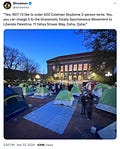


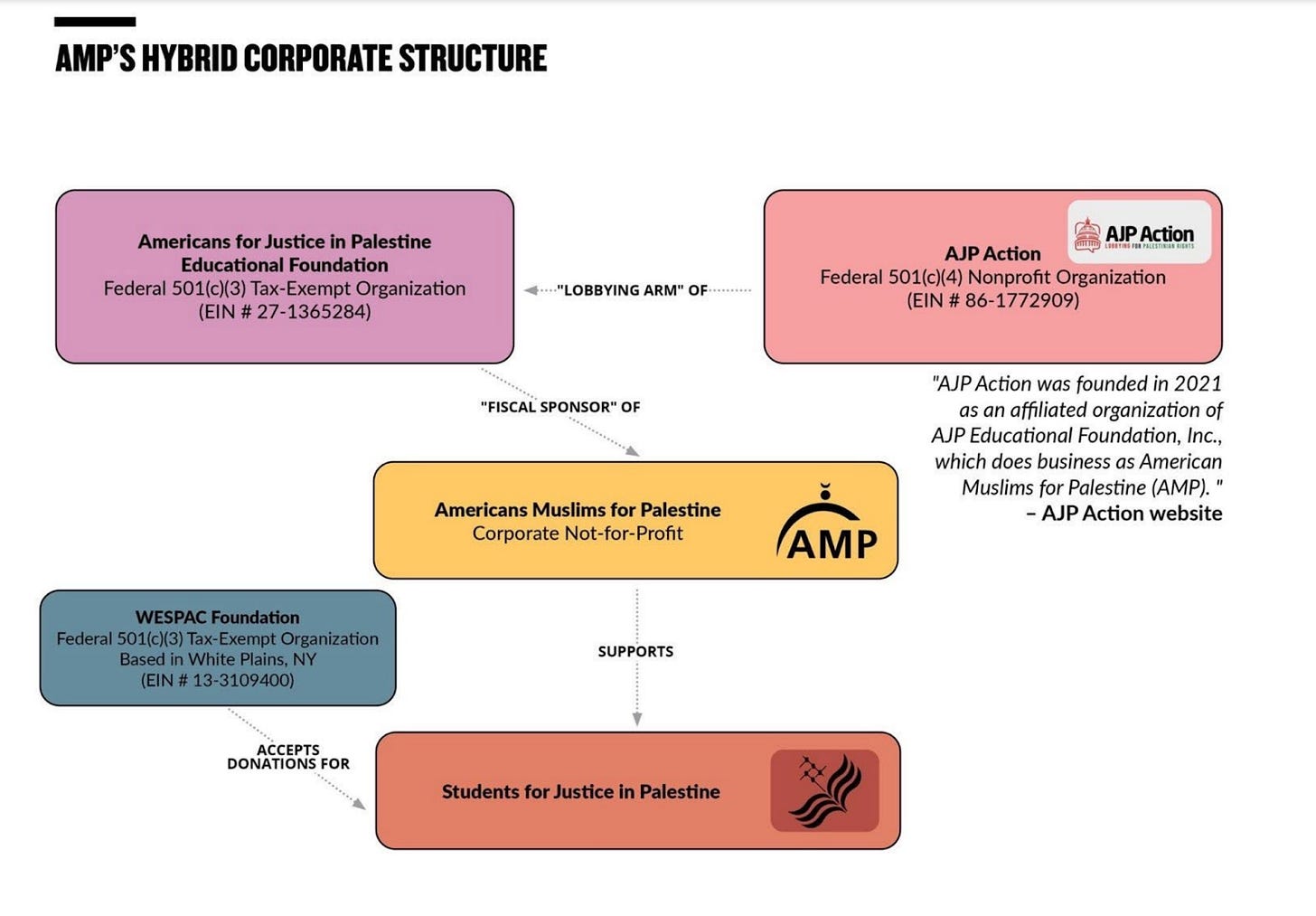

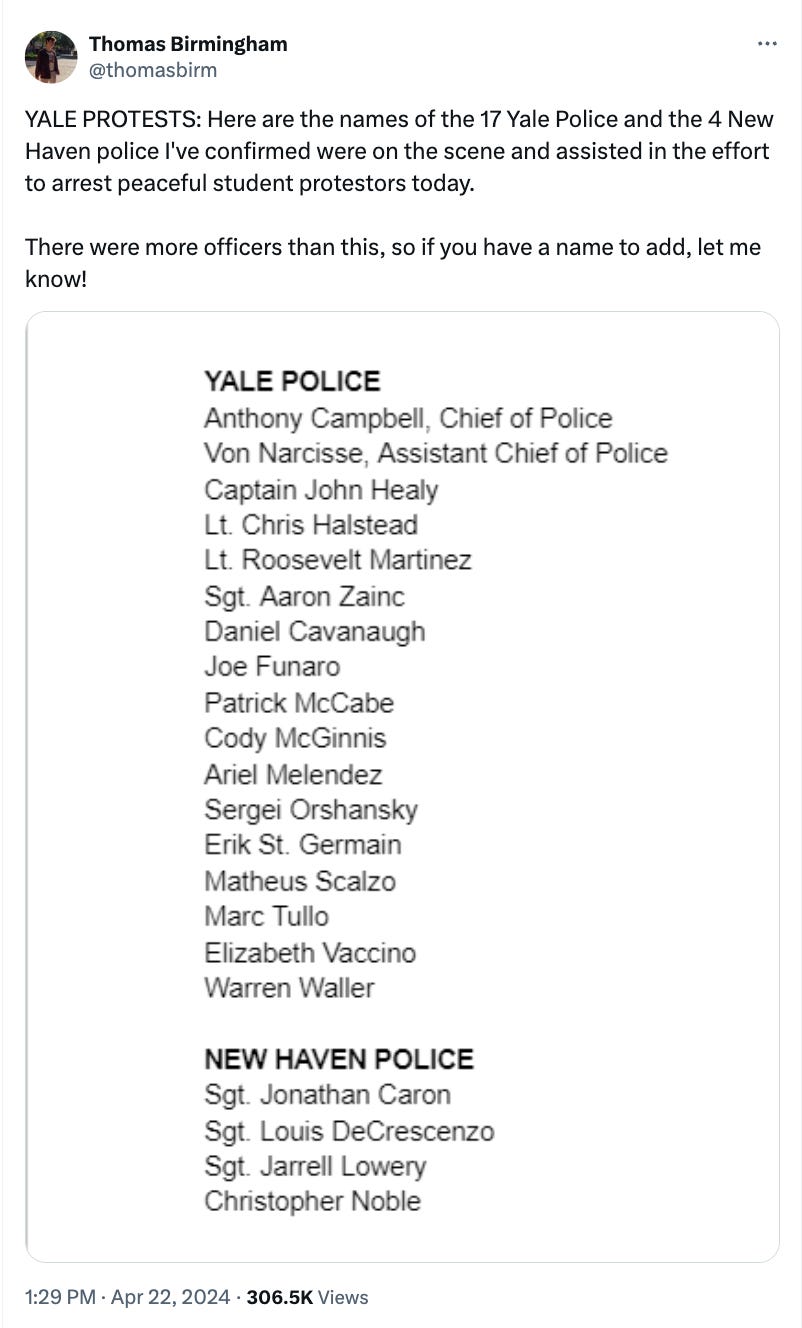
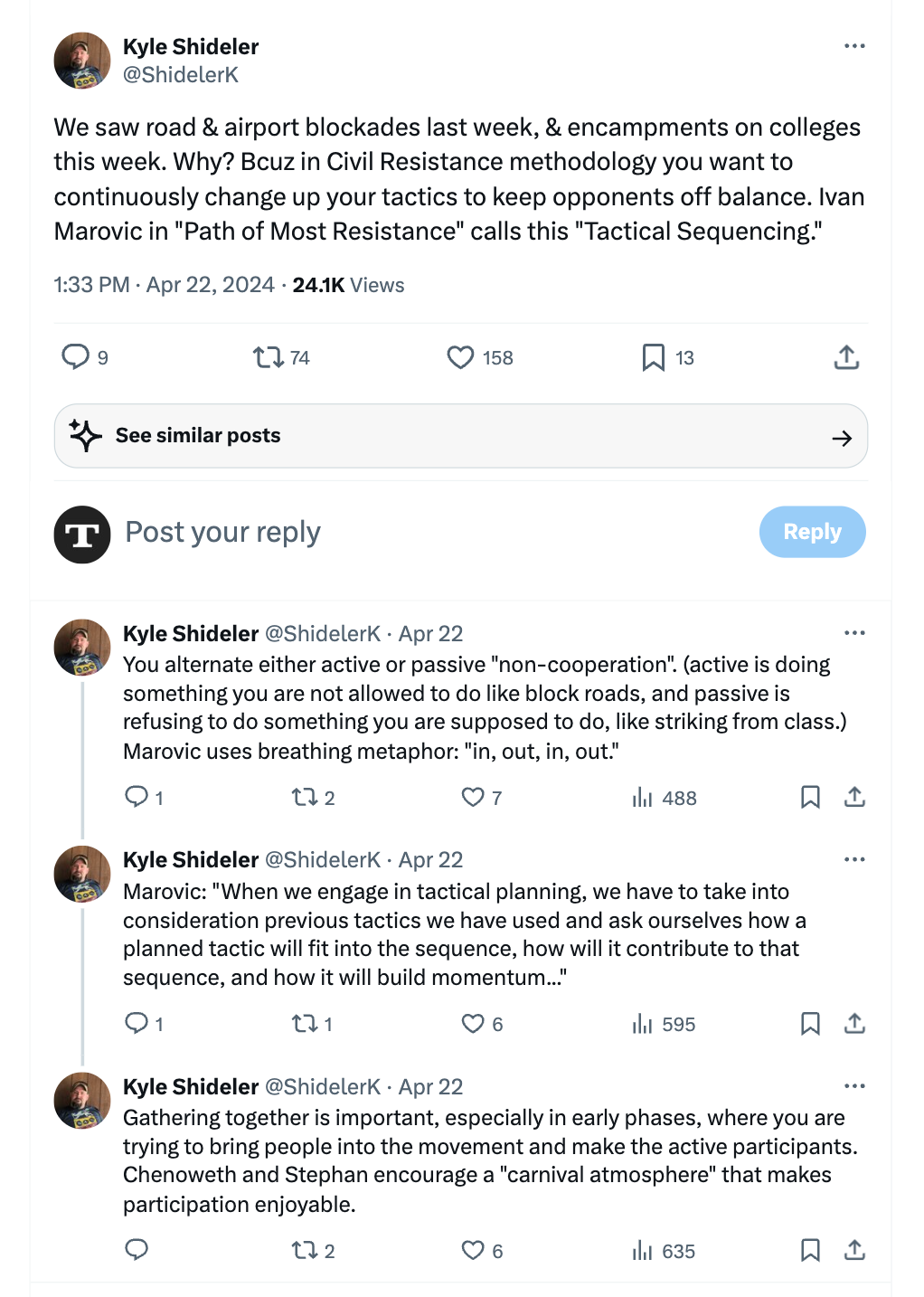
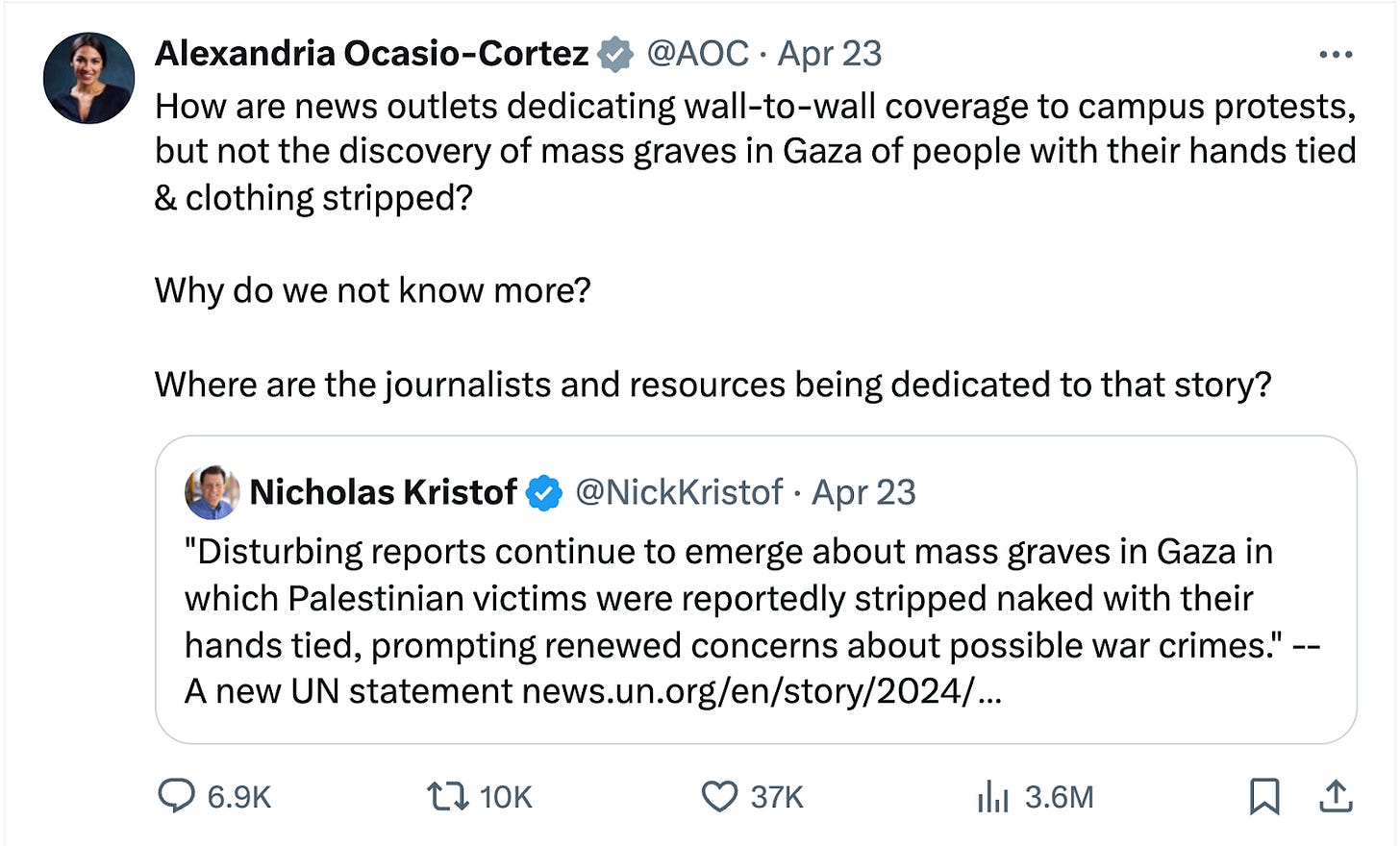

Thank you for this daily download and analysis. It's become a must for me.
Those organizations that are funding the riots should be prosecuted for aiding s d abetting terrorists